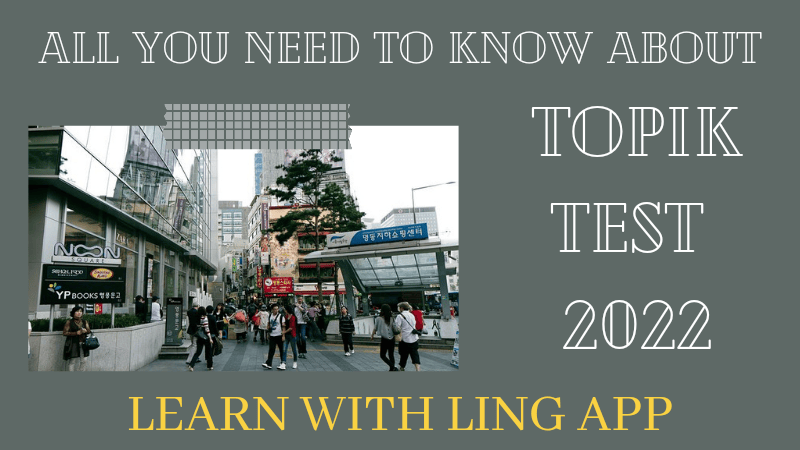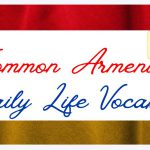If you wish to study in Korea, taking a TOPIK test should be on the top of your priority list. The TOPIK is a written test that gauges a non-native Korean speaker’s capacity to use the Korean language. This is an important test for those planning to move to Korea for work or study. In this blog, we will walk you through the TOPIK test, its test structure, difficulty levels, and schedule for 2022. So let’s dive right in!
What Is the TOPIK test?
TOPIK test is the standard written test designed in South Korea which aims to measure the level of fluency of individuals in the Korean language. It is called 한국어능력시험 (hangug-eoneunglyeogsiheom) in the Korean language. You must pass this, especially if you desire to migrate to the country or get admission to a Korean university.
It was started by the Korea Research Foundation began in 1997. Currently, the institute which controls the merit and administration procedures of this test is The National Institute for International Education (NIIED) which is called 국립국제교육원 (guglibgugjegyoyug-won) in Korean.
This exam is for all people who are not native Korean speakers. This test is known worldwide as it is pretty hard to get a passing score here if you do not study well. After all, this Asian language has a different writing system and grammar rules, so it is expected that you enroll yourself in a course before taking this test. Depending on your country, this test is usually administered at the Korean Embassy, but there are also instances wherein you can take this exam through a local language facility.
Main Purpose
The main purpose of conducting the TOPIK test is to get an insight into the ability to comprehend the Korean language. The test is not just about checking how many words you know. Instead, it gauges your ability to produce grammatically correct and intelligible sentences. Furthermore, it is also utilized to put the obtained insight into allocating the students and professions in sectors based on their levels.
It is not important to thrive in a country that speaks in Korean unless you know the Korean language. Many people fail to understand the importance of language until they visit another country, clueless about communicating with its people. Therefore, this test is taken as a precautionary measure to deal with various situations and get along with people.
Speaking And Writing Test
TOPIK Test is mostly for people who wish to study the writing aspect of the Korean language. The main focus of this test is solely based on the written expression of each individual and their ability to read and comprehend written text in the Korean language. There are other aspects like spoken and cultural elements that you are expected to know as well, but this test does not cover that.
Several other Korean language tests should be taken to improve oral fluency in Korean. Preparing for a TOPIK test will surely enhance your vocabulary. However, to get fluent in speaking Korean, you would have to try other modes of learning.
Perks Of Taking TOPIK Test
There are several perks of taking the TOPIK test, which is following:
- High TOPIK scores will increase your chances of getting a scholarship in Korea. Most of the universities in Korea do not have enough resources to test you and therefore such credentials come in handy.
- Taking the TOPIK test is essential in some of the universities and therefore it is a great idea to have evidence of the TOPIK test beforehand.
- It is written evidence of your Korean language proficiency and can provide you with some bonus points as compared to the people who have not taken this test. Even if their Korean is better than you, lacking the evidence for that can serve as an issue.
- The people who are seeking jobs in Korea automatically come on top of the priority list if they take the TOPIK test.
- If you wish to teach Korean in a sector or even as a freelancer, it will increase your chances of getting the project since the clients will consider you more credible.
TOPIK Test Schedule
This test takes place 5-6 times per year which means that once every two months, and therefore you should be more mindful about the deadlines if you have a deadline approaching for job/study application. The Korean government releases several dates beforehand, which you can get information about. So mark your calendar for all the deadlines of 2022 so that you don’t miss out on any. Below are some of the official test dates (but might differ depending on your country):
- January 23, 2022
- April 9-10, 2022
- May 15, 2022
- July 9-10, 2022
- October 15-16, 2022
- November 13, 2022
How To Apply
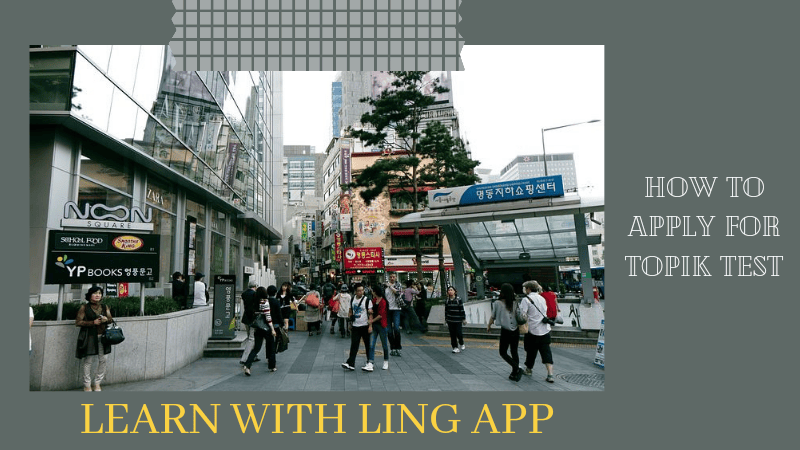
The two main questions that most people wishing to apply for the TOPIK test have are “how to apply?” and “whom to contact?”. Your local Korean embassy or Korean Culture Center should be contacted in this matter.
If you live in Korea, you can quickly go to the official website of TOPIK and register yourself for the test. However, if you live abroad, you need to consult various institutions (like the Korean consulate and Korean Cultural Center in your country), which are officially recognized by the Korean government, to conduct TOPIK tests. If you are enrolled in an institution, your school will also help you process your documents for the test.
Not many documents are required to take the TOPIK. You just need: two passport-sized photographs, an identity card, and the registration fee will suffice in this case.
General Test Structure
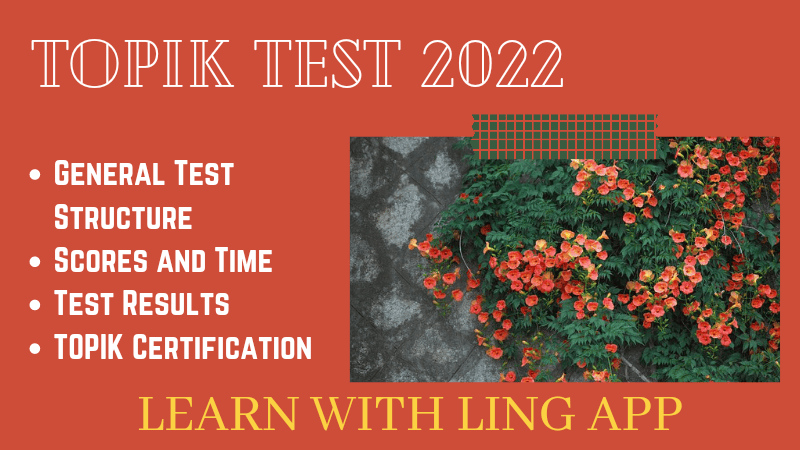
The general test structure of the two levels comprises different sections based on the level. In TOPIK I, there are only two sections; the listening section and the reading section. However, in TOPIK II, there are three main sections; the writing section, listening section, and reading section.
In listening and reading sections, the questions are generally multiple-choice questions. You are provided with various options to choose from for a particular specific question. As for the writing section, you need to answer some short questions.
In TOPIK I, there are 70 MCQ’s, 30 in the listening section, and 40 in the reading section. In TOPIK II, there are 50 Multiple Choice Questions in the reading and listening section each. There are four short questions in which two are MCQ’s based while the other two are open-ended.
Scores And Time
Let’s look at the TOPIK score of each level and the time available. There are 200 marks in TOPIK I, and the time available to solve the test is 100 minutes. The candidates must submit their work within 100 minutes for the TOPIK I.
Conversely, for TOPIK II, there are 300 marks, and the time provided to submit the test is 180 Minutes. The time is divided between 90 minutes each part with a break of 30 minutes in between.
Test Results
To pass level 1, a score of 80 – 139 is required. For level 2, a score of 140 – 200, for level 3 a score of 120 – 149, for level 4 a score of 150 – 189, for level 5 a score of 190 – 229, and level 6, a score of 230 – 300 is required. Any score below 80 for TOPIK I and below 120 for TOPIK II is considered unacceptable and leads to the candidate’s failure.
TOPIK Certification
There are various ways to obtain the TOPIK certificate if you pass the exam. If you are in Korea, you can get the printout yourself as you can get the results on the official website of TOPIK. However, if you are an overseas applicant, you will have to wait so that your concerned overseas institute gets the report and sends you.
The certificate for the TOPIK exam is valid for two years only, and afterward, you need to retake the TOPIK test to use it.
Main Categories
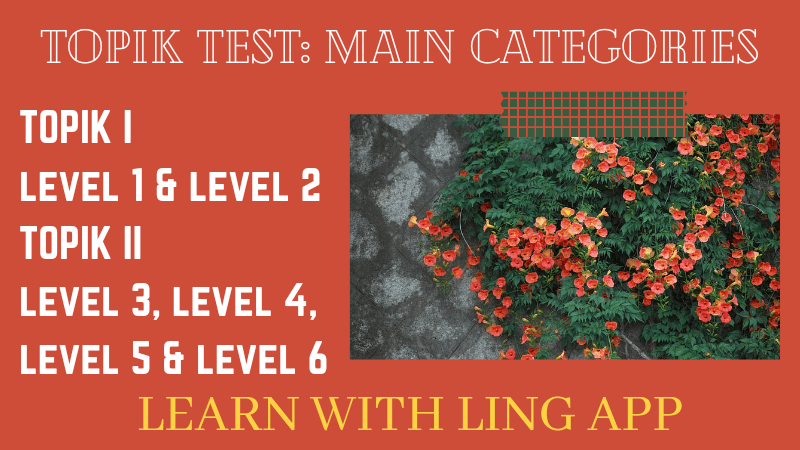
There are two primary levels of the TOPIK test (TOPIK I and TOPIK ii) and further subcategories. All in all, there are six subcategories. The first two categories are in the first level, generally for the beginner level. The other four subcategories are in the TOPIK ii level.
TOPIK I
In TOPIK I, there are two main levels; level 1 and level 2. Since TOPIK I, mainly focuses on the beginner level, the information obtained in this level is generally of the basic level. In TOPIK I, there are only two sections; reading and writing.
Let’s learn about the syllabus of levels 1 and 2.
Level 1
In level 1, the main focus is on carrying out a basic conversation using basic commands. It would help if you had enough vocabulary you might need in your everyday life. This could include information about you. You should be able to introduce yourself in the Korean language.
The basic introduction includes greetings, your name, profession/occupation, what you study, family members, and nationality. You can also add other necessary information, but these are the ultimate basic ones that can’t be avoided in any case.
Furthermore, you should also know how to give other minor yet essential details about your personality. This could include your hobbies, favorite drink, animals, and your plans.
There are 800 words in TOPIK I, which you need to master. These are the most important words and are generally easy to memorize. Having a basic knowledge of these words is important because the entire test at this level revolves around these 800 words only.
You should know how to form simple sentences using these words and comprehend the text provided based on the provided vocabulary.
Level 2
In level 2, the TOPIK test takes the level up a notch, and the number of words required to ace this level is 1,500 to 2,000. This level is a bit more detailed since it focuses on carrying out the conversation related to everyday life and activities.
You could be asked about how to make a phone call at this level. Furthermore, another significant element in this level is to order food in a restaurant and buy something from the market.
At this level, you should be aware of how the honorifics work in the Korean language. In the first level, this is excluded. But since level 2 is related to dealing with people, it is important to know how to talk to different people respectfully. You are taught the basics of formal and informal conversations at this level.
You should know how to join sentences and form different paragraphs.
TOPIK II
After you are done with TOPIK I test, you can successfully attempt the TOPIK II level. This is for the intermediate and advanced levels. It starts with the accessible syllabus, but gradually, the syllabus becomes more challenging as the levels increase.
Level 6 is the most competitive level, and the people who pass this level are known to have obtained close to the native level of fluency in Korean. There are four main levels in this category. In TOPIK II, there are three main sections; listening, writing, and reading.
Let’s learn about each level.
Level 3
In level 3, the conversations about oneself, the basic activities, and daily routines are checked. The candidate mustn’t find these basic things difficult by this level. They can easily communicate with different people, for instance in public places using public transport, etc.
At this level, the candidate should be capable enough to make and understand the Korean text regarding different social and personal situations. Furthermore, it is also vital that the candidate can comprehend and produce the material regarding these two subjects.
A new aspect of this level is that it is checked whether the candidate knows the rules to write and speak Korean. Many times, the words written in Korean are not used for speaking Korean. Unless a person is in a very professional setting, the words in Spoken Korean are different from written Korean. Here, it is checked if the candidate is aware of the difference.
Level 4
The candidate should have mastered all the basic information required in the other three levels. The candidate should also understand the news by listening to the news broadcast and reading the newspapers.
The candidate should be aware of how to use the information to form Korean text and understand based on the abstract and social subjects. Furthermore, this level also requires some essential insight into the local culture.
Korean language learners should start getting some basic information about the local culture. You should know different proverbs and idioms which people use in their daily lives. This could also include the usage of various slang, which has become a part of Korean text nowadays. Fluency is the main focus at this level.
Level 5
Since this level is the initial level of the Korean language’s advanced level, the competition increases significantly. This level requires a candidate to have the vocabulary necessary to research various academic spheres.
In level 5, the focus of the entire test shifts from a more conversational-based structure to an academic and professional structure. You should know all the commonly used vocabulary in different subjects at this level.
In level 5, various domains are judged to check your linguistic fluency. The vocabulary-based in the politics of the country could be tested. Text about other related issues like the economy (currency), strategic ties, policy-making, etc., could be administered.
Furthermore, your textual and spoken fluency is administered from all aspects, including having a vast vocabulary, forming grammatically correct and complicated sentences, and an apt understanding of formal/informal speech and other domains.
Level 6
Finally, the most challenging level is feared by most of the candidates. Level 6 is the most difficult, but that is for someone who has not even started learning Korean. If you have been learning Korean for a while and have passed all the other levels, then passing this level might require more time and effort, but you will easily be able to crack it.
In level 6, you are supposed to be able to carry out all the functions which have been mentioned in the other levels. Furthermore, you should have no difficulty comprehending or producing Korean language skills based on an unfamiliar domain. Its critical nature is what makes it extremely difficult to achieve.
Two Versions
There are two versions of the TOPIK test; the Standard (S)-TOPIK and the Business (B)-TOPIK test. In the standard TOPIK, the information is based on the general knowledge that the candidates have in Korean and is mainly for the students. Business TOPIK is mainly for the people who wish to start a business in Korea or are going to Korea for employment purposes. Its application is primarily pragmatic.
How To Prepare

There are several ways to prepare for a TOPIK test. You can join a language school in your vicinity. A language school will have all the information you need for this test. They will ask for a specific amount, and your course will start. Or you can learn Korean on Ling App and master the essential words and phrases and their alphabet for free.
Why spend loads of money when you can get something for free and that too in the comfort of your private space? Along with the written aspect of the language for the TOPIK test, the Ling app provides information about the spoken and colloquial expressions in Korea and introduces the Korean culture to you in a way that will make your life in Korea easier as non-native speakers.
Wrapping Up

Now you must know all the crucial aspects of TOPIK and are ready to apply for the exam. If you want to prepare for TOPIK, please check out Ling App by Simya Solutions. Ling App has made learning Korean easy and fun. We also have another blog on Korean Adverbs and Korean Drama Vocabulary.
Happy Learning!
